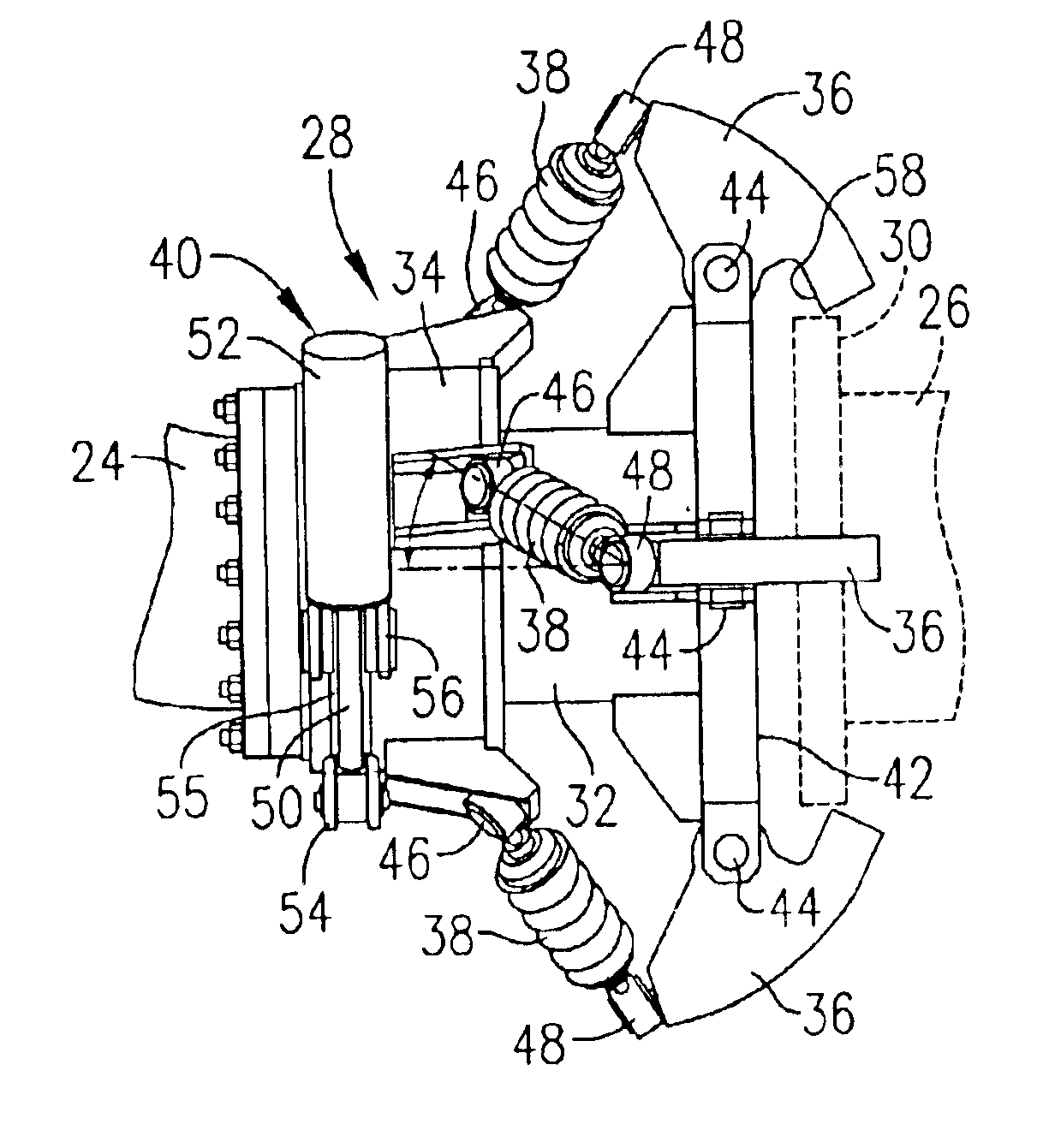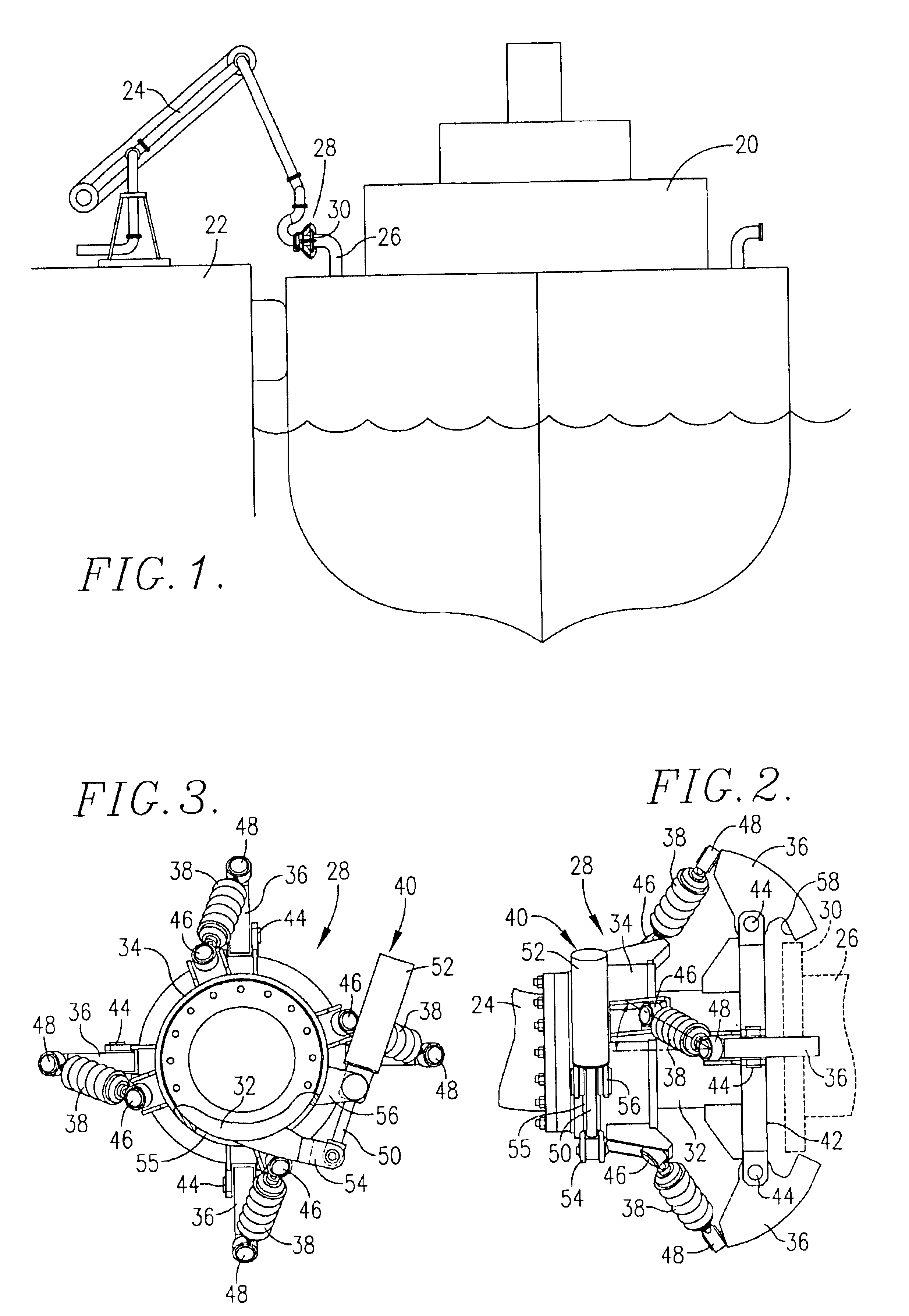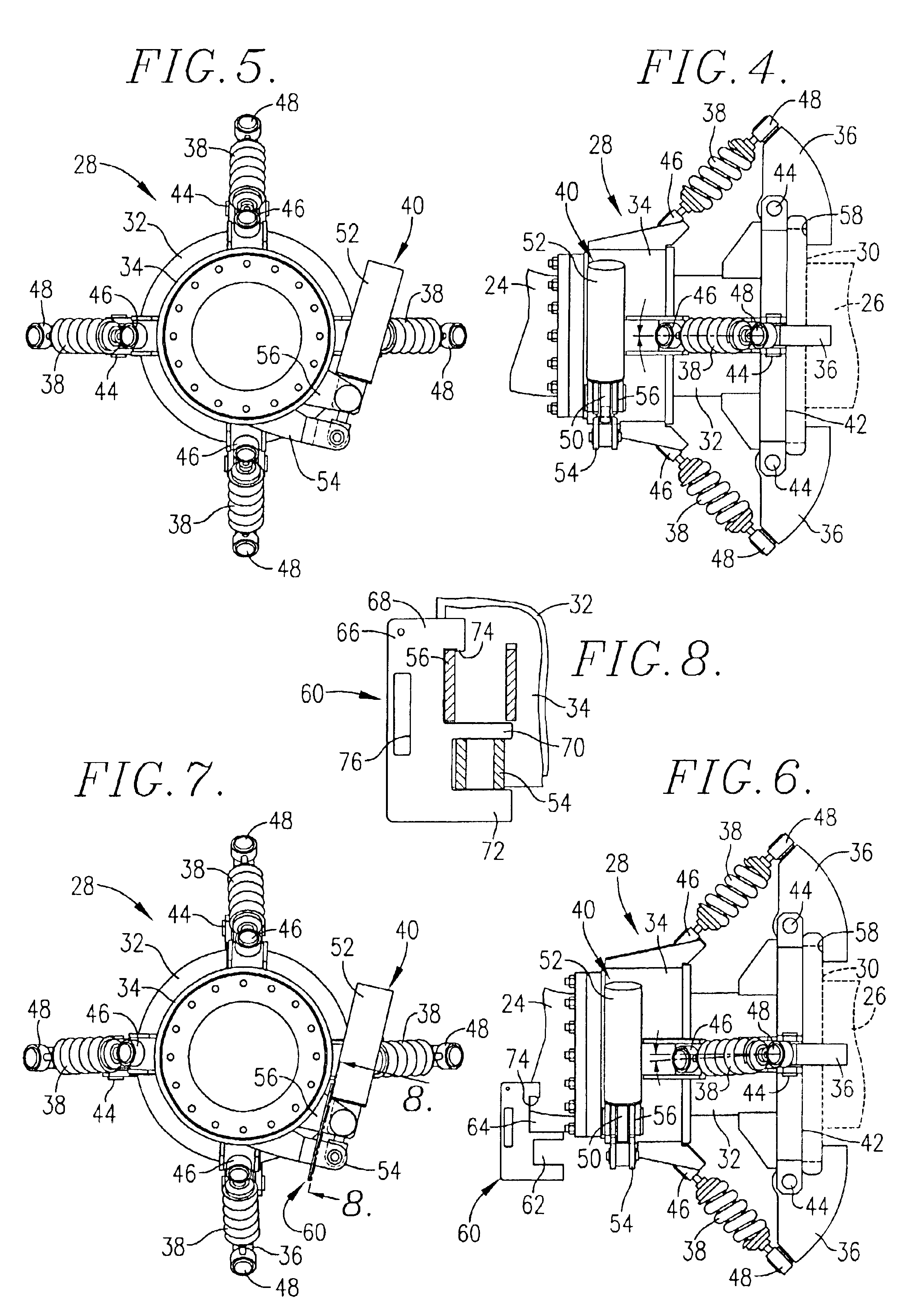Mechanical locking system for marine loading arm coupler
a technology of mechanical locking and loading arm, which is applied in the direction of couplings, hose connections, passenger handling apparatus, etc., can solve the problem of increasing the risk of fluid leakage between the coupler and the tanker flang
- Summary
- Abstract
- Description
- Claims
- Application Information
AI Technical Summary
Benefits of technology
Problems solved by technology
Method used
Image
Examples
Embodiment Construction
Referring initially to FIG. 1, a marine tanker 20 is positioned adjacent a pier 22 for loading or unloading fluids into or out of tanker 20 via a marine loading arm 24. Tanker 20 includes an inlet / outlet port 26 for providing fluid communication between marine loading arm 24 and tanker 20. A quick-connect coupler 28 is attached to a distal end of marine loading arm 24 and is operable to fluidly connect marine loading arm 24 to inlet / outlet port 26 by engaging a flange 30 of inlet / outlet port 26. Quick-connect coupler 28 is preferably a commercially available marine loading arm hydraulic coupler. Suitable hydraulic couplers are available from MIB International, Ltd., England under the commercial designation “Quick Connect / Disconnect Coupler (QCDC).”
Referring to FIGS. 2-7, quick-connect coupler 28 preferably comprises a main body 32, a rotatable collar 34, a plurality of jaws 36, a plurality of struts 38, and a linear actuator 40. Body 32 is rigidly coupled to a distal end of marine l...
PUM
 Login to View More
Login to View More Abstract
Description
Claims
Application Information
 Login to View More
Login to View More - R&D
- Intellectual Property
- Life Sciences
- Materials
- Tech Scout
- Unparalleled Data Quality
- Higher Quality Content
- 60% Fewer Hallucinations
Browse by: Latest US Patents, China's latest patents, Technical Efficacy Thesaurus, Application Domain, Technology Topic, Popular Technical Reports.
© 2025 PatSnap. All rights reserved.Legal|Privacy policy|Modern Slavery Act Transparency Statement|Sitemap|About US| Contact US: help@patsnap.com



